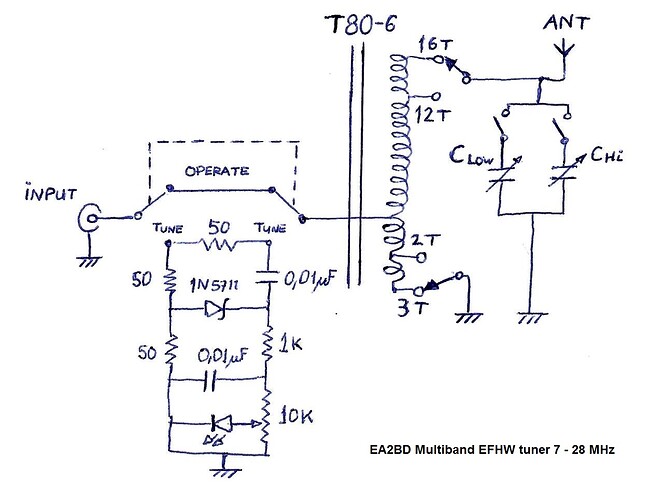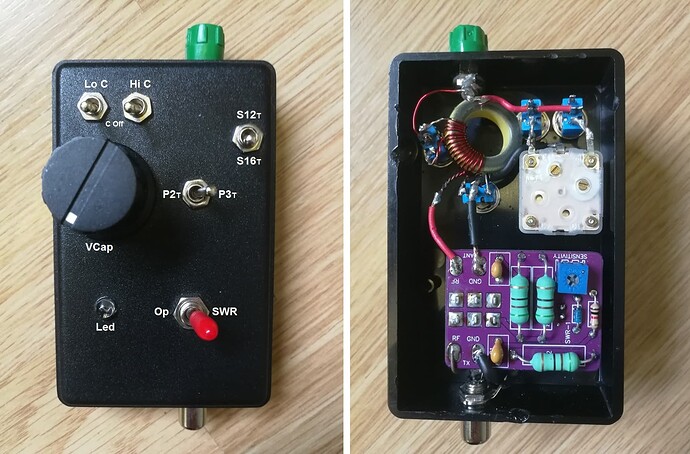EFHW tuner v.2 (grounded parallel resonant circuit)
I have been happy using the EFHW tuner described at the top of this thread (v.1) since December 2020.
Tuning the EFHW antenna after any band change, or when moving from SSB to CW section in a band was fast and easy. The tuner has served me well but SWR was best only between 40 to 15 meters.
Due to the current good solar conditions, I wanted to find and improved version to use higher bands to cover up to 28 MHz.
In the other hand I wanted to add a SWR led indicator to aid in the tuning process. I have a few little rigs without an SWR readout on the display and a led would help tuning the capacitor while the tuner is far from the rig, hanging at the antenna feed point.
The heart of this tuner is similar to the one in v.1 shown at the top of this thread, but I added two slight changes: a variation in the windings and a led SWR circuit.
The inductance is again an autotransformer. The Primary is selectable between 2 or 3 turns so that I choose the best in case I need it.
The Secondary has also a two position switch to select between a tap after 12 turns (including the Primary ones) or the end of the winding at 16 turns.
I measured the inductance values of the toroid:
Primary:
-
2T = 0,05 uH
-
3T = 0,13 uH
Secondary (measured after the tap at the end of the Primary):
-
12T (9T after Prim) = 1,10 uH
-
16T (13T after Prim) = 1,83 uH
The polyvaricon is the same than for the v.1, with two set of plates in parallel. Its range was also measured:
- C-Lo: 4 – 64 pF
- C-Hi: 16 – 163 pF (Max value both connected is 227 pF)
Concerning the Led SWR indicator, I bought a cheap kit in Kanga products (SWR-1 resistive bridge), a clever implementation of Wheatstone bridge circuit that was easy to solder on a neat mini PCB, including three 51 ohm 2 watt resistors, a switch, a trimmer (to adapt the led sensitivity), a 1N5711 diode, a 1K resistor, two 0,01 uF caps and the Led.
The schematic of the complete tuner is here:
And this is the final assembled tuner:
v.2 Tests
I tested the function by connecting a 3K ohm resistor at the outlet plug and the SWR values were very good.
Using a 20 m long wire I can tune it in 14 – 21 and 28 MHz with good levels of around 1,2:1.
In the other hand, I had difficulties to tune in 7 MHz as the min SWR achieved was 2,5:1. It seems I’ll still be using the v.1 tuner for the lower bands.
I have prepared a monoband EFHW for 28 MHz (about 5 meter long) and the v2 tuner worked just perfect. I got very good results, logging lots of transatlantic contacts this way and I even participated in the ARRL DX CW contest running portable QRP, just for fun.
73 de Ignacio

